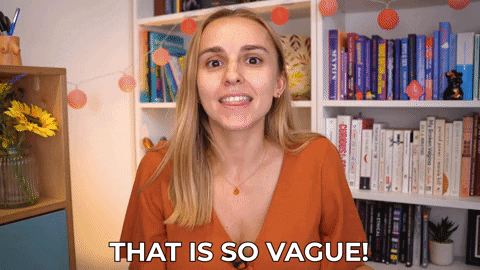Is it still January? Just barely! Do you remember the you who started the year—oh lo so many weeks ago—with the best intentions, stepping into the new year with fresh resolve to achieve one or more goals. And yet research shows that by January 10 each year, many of us are already struggling. Well, Quitter’s Day has now come and gone, so how are you doing on your goals for the year?
The fact that there’s a day recognizing our collective abandonment of our aspirations tells us that, if you’re having a hard time, you’re far from alone.
But why? How is it that in spite of our best intentions, so many of us still flounder? There are lots of answers out there, but this one may surprise you: It’s not about us.
Or rather, it’s not only about us. It may have more to do with the systems, structures, and cultures we build (or fail to build) around us.
Here are 5 common mistakes we make when setting and pursuing goals, and how engaging a growth mindset – whether individually or collectively – can help. I hope they help you wherever you are in your goal journey this year.
Mistake #1: Setting Vague Goals and Over-Focusing on Outcomes
Recently, a friend told me that last year, she’d vowed to dust off her French. She’d taken several years in high school and college and wanted to start studying it again. Yet months passed and even though she had the Duolingo app loaded onto her phone, she struggled to get started.
“I’ll do it once this big project is over,” she told herself. Then it was, “I’ll start after our vacation.” You know the drill.
While her intentions were good, my friend fell into a common trap. One of the reasons her French quest failed to launch is that she didn’t set a clear goal.
Her objective of “dusting off my French” was too vague, and so it was difficult to enact.
Instead, if she’d said something like, “I’m going to study French for ten minutes a day,” she’d have been much more likely to get started.
How often have you heard someone say (or said yourself) something like, “This year, I’m going to get healthy,” “I’m going to go to the gym more often,” or “I’m going to prioritize sleep!”
Those are all great starting points, but without a clear sense of what constitutes success, it’s hard to make meaningful progress. Or sometimes, like my friend, to make any progress at all.
Instead, be clear. “I’m going to eat five servings of veggies every day,” “I’m going to exercise for at least thirty minutes, three times per week,” or “I’m going to be in bed by 10pm on work nights.”
Notice the degree of specificity baked into those declarations.
But there’s something else included that will also increase the likelihood that we’ll achieve these goals: they focus on process over progress.
Common wisdom says we should drill down on the outcomes we want to achieve, yet sometimes that doesn’t actually serve us well.
For instance, instead of saying “I want to get healthy” we might say “I want to lose five pounds.” Okay, sure, your goal might be to fit into those skinny jeans for your family photo, in which case losing a few pounds could work for you. But more often, when we set these types of outcomes-related goals, they don’t really serve our deeper desires. In this case, that is to be healthier.
Losing weight might feel good but it’s not always an indicator of good health, whereas eating your veggies is likely to help you get there.
If you focus on your health journey, chances are you’ll actually achieve some of those other objectives – like arriving at a healthier weight – along the way.
Also, setting process goals takes us off that binary success-failure rollercoaster. Like, say you lose two pounds, but then gain one back. You feel great, but then you lose your motivation.
Instead, process goals make it easier to celebrate things like effective effort and progress along the way. Maybe the scale didn’t tip the way you wanted it to this week, but you nailed your veggie goal, plus your doctor just told you that your cholesterol’s down! Enjoy the wins wherever you find them.
To this point, I’ve only talked about goal achievement as an individual pursuit. If you want to amp up your odds of success, you can create a Culture of Growth around you to support your efforts. For instance, you might tell a friend or two about your goal and enlist them as accountability buddies (and cheerleaders). You could start a step challenge at work or create a lunchtime walking club.
In our hyper-individualized culture, it’s easy to think that achieving our aims is something we have to do on our own. But when we engage our growth mindset, we turn our goals into a group effort.
Another benefit we enjoy from focusing on process over static outcomes is that we make it easier to analyze our quest along the way. And that brings us to another mistake we often make…
Mistake #2: Failing to Reflect and Adjust
To extend the journey metaphor a bit, we often think that achieving a goal is like arriving at a destination – we simply plug it into the GPS and drive. As long as we keep moving forward, we’ll get there! Yet, what if you get there only to realize that there isn’t what you thought it would be?
In a conversation with podcaster Rich Roll, advice guru Mark Manson recounted a story in which a med school student wrote to him saying that he hated all of his classes and had a really hard time studying. Was there any advice Manson could give him to stay motivated? Manson countered that the problem might not be with his motivation but his objective. He encouraged the student to reflect on whether he truly wanted to be a doctor.
As the saying goes, sometimes we climb a ladder only to realize that our ladder was up against the wrong building. If we simply forge ahead to the top without stopping periodically to look around, we lose the opportunity to adjust our course.
When we’re in our fixed mindset, we might feel like we need to pursue a goal because we said we would, or it seems like the “right thing” or a “good thing” to do. We grip our goals hard, becoming inflexible.
But in our growth mindset, our goal isn’t the only focus – we’re just as interested in what we’re learning along the way. That includes learning whether our goal still serves us or if we’d be better served by adjusting course.
To support ourselves in this endeavor, we can foster reflective cultures around us, whether at work, home, in our friendships, and so on. For instance, maybe your family decides to save up for a special vacation. You set out the steps you think will get you there, but then you also set up a monthly meeting to see how you’re doing. Maybe in that meeting you see that while you’ve all been great at reducing those Amazon impulse buys, your gang’s penchant for pizza is busting your takeout budget. Knowing that, you can adjust your focus.
Or perhaps in talking, you realize as a group that rather than going overseas, you’d rather go camping in Yellowstone! When we doggedly pursue an objective, we lose the opportunity to reevaluate both our approach and the goal itself along the way.
This relates closely to another misstep we often make…
Mistake #3: Over-focusing on Long-Term Goals
When our goals relate to objectives that will take a long time to achieve, they can feel more daunting and difficult.
For instance, let’s say you’ve never studied martial arts, but you decide you want to become a black belt in Brazilian jiu-jitsu. That’s not going to happen overnight, or even over many nights! Recognizing how long that road is going to be can make it challenging to get started.
It’s great to have big ambitions, but to make them a reality, it’s helpful to break them down into smaller, more approachable goals. To create meaningful milestones.
For instance, first finding a jiu-jitsu school that feels like a good fit. Then committing to a certain number of classes per week. Maybe it’s working towards the next colored belt or simply mastering a new throw or lock. In time, that larger goal will come, and you get to enjoy many smaller accomplishments along the way.
One of the best ways to create a Culture of Growth around long-term goals is to build or find a network of folks engaged in the same or a similar quest. If you’re determined to master the art of quilting or finally write that novel, join a quilting circle or a writer’s group. That can keep you moving in the same direction together and provide a source of ongoing encouragement. Plus, the social aspect can also help you make faster progress, learn a lot along the way, and increase your enjoyment.
And this links to the next reason we may fall short of our objectives…
Mistake #4: Ignoring the Importance of Community and Environment
There’s a lot folded up under this common mistake, some of which we’ve already touched on.
We’ve seen that engaging others helps us achieve our goals, but the reverse is also true.
Failing to recognize the importance of our environment or of engaging community—and instead relying solely on our own grit or willpower—makes it harder to get where we want to go.
Ultrarunner Robbie Balenger is no stranger to audacious goals. He’s already jogged across the entire United States and attempted to outrun a Tesla. But his Colorado Crush project was his biggest ambition yet: In a single summer, he would attempt to run the 485-mile Colorado Trail, and summit all 58 of Colorado’s 14,000-foot peaks. And just for fun, he’d add in the entire Leadville Trail Series, which is comprised of three races at the 26-, 50- and 100-mile distances. (I’m tired just reading about it!)
Balenger nearly achieved his goal, yet when he encountered his final task – the Leadville 100 – he faltered. Partway through he felt like he’d finally run out of gas. He worried that he wouldn’t be able to make it to the finish line.
Then, something unexpected happened. Impressed by Balenger’s goal and his near-success, a stranger who’d been running alongside him decided to help. He slowed down and paced Balenger all the way to the next aid station where he could sit down, refuel, and get a much-needed boost from his crew. Balenger was moved to tears by this selfless act, which he said saved his race and therefore his entire effort. In the end Balenger finished the run and realized his dream of crushing Colorado, with a little help from a new friend.
When we try to achieve our goals in isolation, we’re more likely to give up. Sure, sometimes we might get lucky like Robbie and a benevolent cypher may come along to lend us aid, but it’s wise to be more proactive. Enlist help and support wherever and in whatever ways you may need it.
Whether it’s simply people to cheer you along at a critical juncture or experts who have key information or other resources that you’ll need to succeed, try and frame your goal in terms of a group. Even if your pursuit seems relatively solitary, you’re likely need others in some way – like when your spouse or parents watch the kids so you can take that Saturday morning class.
It’s also important to recognize the role our surroundings play in our efforts. This can include both the people we’re around, as well as our physical environment. Consider how both could either help or hinder you.
When it comes to your physical environment, as much as possible you want to design and structure your surroundings in a way that’s supportive. That might look like having a dedicated or uncluttered workspace, or it might be something deeper but less obvious.
In my research, I study how situational cues can impact our mindset and our beliefs about ourselves and what’s possible.
Let’s say you’re in a workplace where certain cues – like the fact that only ten percent of the senior workforce is comprised of women – indicate that you’re unlikely get ahead.
You can help to counteract those cues by consciously creating an environment that’s encouraging. Maybe you launch or join a women’s affinity group in the office, or less formally, convene a growth-mindset pod with some like-minded colleagues within or outside of your workplace. Maybe you include in your surroundings some inspirational quotes by your favorite women pioneers. You get the idea. (On my website, I offer a cues audit assessment to help you identify and work with situational cues in your local environment.)
You can also identify elements that are already in place that can reduce the friction between you and your goal.
Remember my friend who wanted to dust off her French? She realized that since her wife and daughter were already learning French, she could use their momentum to jumpstart her own. She decided to piggyback on their habit of doing their Duolingo lessons after dinner. And when that happened, their combined efforts exploded. They started practicing with one another at meals and daydreaming about a vacation in France. When French became a family affair, doing the lessons became easy and fun.
In large ways and small, our surroundings influence our behavior. When we notice how, we can unlock the ability to create and leverage Cultures or Growth. And that can help us reach our goals.
Yet when it comes to experiencing success or failure, it’s not as simple as one versus the other, which brings us to our final mistake.
Mistake #5: Taking an All-or-Nothing Approach
We’re often taught that we need to go big or go home! In many ways both large and small we’re confronted with this notion that life is about this or that. We win or we lose.
In reality, our goals have a lot more to offer us than just success or failure.
Sometimes we feel like if we miss a single step we’ve gotten completely off track. That if we break our 40-day streak, it’s tantamount to total failure. Any time we encounter this kind of rigidity it’s an indicator that we’ve drifted into our fixed mindset.
But when we embrace our growth mindset, we see that our gains aren’t simply erased by missing a day of French, by falling short of our daily greens goal during that work trip, or by blowing off a single class to binge watch Netflix.
Instead, we see that our setbacks offer opportunities to learn, whether it’s recognizing that we’ve been pushing too hard and need more breaks, or simply learning to show ourselves some compassion. Instead of beating ourselves up and characterizing ourselves as failures, we learn to ask questions such as, “What happened there?” and “How can I do better now?”
Because again, it’s not all about the result – the process matters, as well. If we’re learning along the way, to some extent that in and of itself is a success. When we’re geared towards growth, we find wins even in our losses, and we use those losses to enable future wins.
To create a Culture of Growth, we can start to normalize imperfection and surround ourselves with people who similarly exercise compassion towards self and others. Together, we can help each other learn when we falter, and get back up again when we fall.
Reading out these common mistakes, I’m curious about what resonated with you.
Did you find anything particularly helpful, or are there other growth-minded strategies you’d like to share? Let me know!
Your Friend in Growth,
Mary











